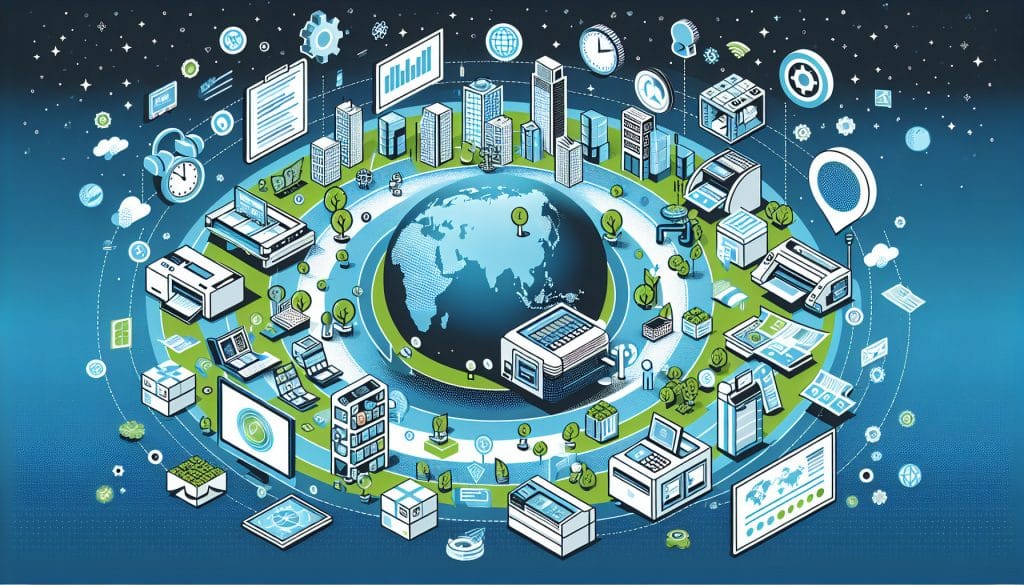Sustainable IT service solutions: Forward-looking approaches to increasing efficiency in digital change for companies in Germany
In today’s business world, companies in Germany are faced with the challenge of adapting to digital change through sustainable IT solutions. The focus on sustainable IT solutions is becoming increasingly important as organizations not only need to increase their efficiency but also take on environmental responsibility. This article provides a detailed overview of innovative approaches and best practices that help companies make their IT strategies sustainable.
1. Importance of sustainability in IT
Integrating sustainability into IT processes has far-reaching implications. Companies are increasingly realizing that a sustainable IT strategy is not only good for the environment, but can also be financially beneficial. Some of the key benefits include:
- Reduced operating costs through more efficient use of resources.
- Improved brand perception and customer loyalty.
- Compliance with legal regulations and environmental standards.
2. Essential elements of sustainable IT solutions
To understand the superstructure of sustainable IT solutions, it is important to examine the core components:
- Resource-saving hardware: Choosing energy efficient appliances is essential. For example, using used appliances such as the Ricoh MP 5055 not only save costs but also reduce environmental impact.
- Collaborative software: Tools that enable remote work reduce the need for physical mobility and thus CO2 emissions.
- data centers: The use of green data centers creates conditions for environmentally friendly data processing.
3. Successful implementation of sustainable IT solutions
Implementing sustainable IT solutions requires a strategic approach. The following steps are crucial:
- Analysis of the existing IT infrastructure: An inventory of the current systems helps to identify optimization potential.
- Developing a sustainable IT plan: Based on the analysis, a plan should be developed that sets specific goals and actions.
- Training of employees: In order to successfully implement sustainable practices, raising awareness among employees is essential.
4. Examples of sustainable IT initiatives in Germany
An outstanding example of the successful implementation of sustainable IT solutions is the company BMWWith the aim of drastically reducing CO2 emissions in the data centers, BMW invested in sustainable cooling systems that reduced energy consumption by up to 25%. Such initiatives illustrate how companies can sustainable IT solutions not only improve their environmental footprint but also reduce operating costs.
5. Integration of circular economy into IT
An innovative approach to promoting sustainability in IT is the implementation of circular economy principles. This includes:
- Recycling: Instead of throwing devices in landfill, they should be recycled for reuse. The use of ink such as the Ricoh Toner MP-C3502 offers advantages for resource conservation.
- Upcycling: Older devices can often be upgraded with new technologies to extend their lifespan.
6. Challenges in implementing sustainable IT strategies
Despite the advantages, the implementation and integration of sustainable IT solutions pose various challenges. The most common include:
- High initial investments: In many cases, the initial costs of sustainable technologies can be high.
- Lack of know-how: Many companies do not have the resources or knowledge to effectively implement sustainable practices.
- Resistance to change: Cultural acceptance of change can be a hurdle.
7. Technological progress and sustainable IT
New technologies have the potential to revolutionize sustainability in IT. Artificial intelligence (AI), for example, can be used to optimize energy consumption in data centers, while cloud computing enables companies to use resources according to their needs.
8. The influence of legislation on sustainable IT solutions
In Germany, there are numerous legal regulations that encourage companies to implement sustainable practices in their IT. The Circular Economy Act and the new EU directives on the Waste Electrical and Electronic Equipment Ordinance are two examples that encourage companies to reform their IT infrastructure.
9. Future Outlook: Sustainable IT in 2030
The future of IT will be strongly influenced by sustainable practices. Forecasts show that companies that sustainable IT solutions will benefit not only from an improved corporate image, but also from cost reductions and increased efficiency. The integration of sustainable practices will become the norm by 2030 and will therefore be an essential competitive condition.
10. Conclusion: The path to a sustainable IT future
In summary, it can be said that companies in Germany are making strategic decisions and innovative approaches to implementing sustainable IT solutions can benefit significantly from the advantages. Investing in sustainable technologies is not only a step towards reducing the ecological footprint, but also an essential component of a sustainable business model.














